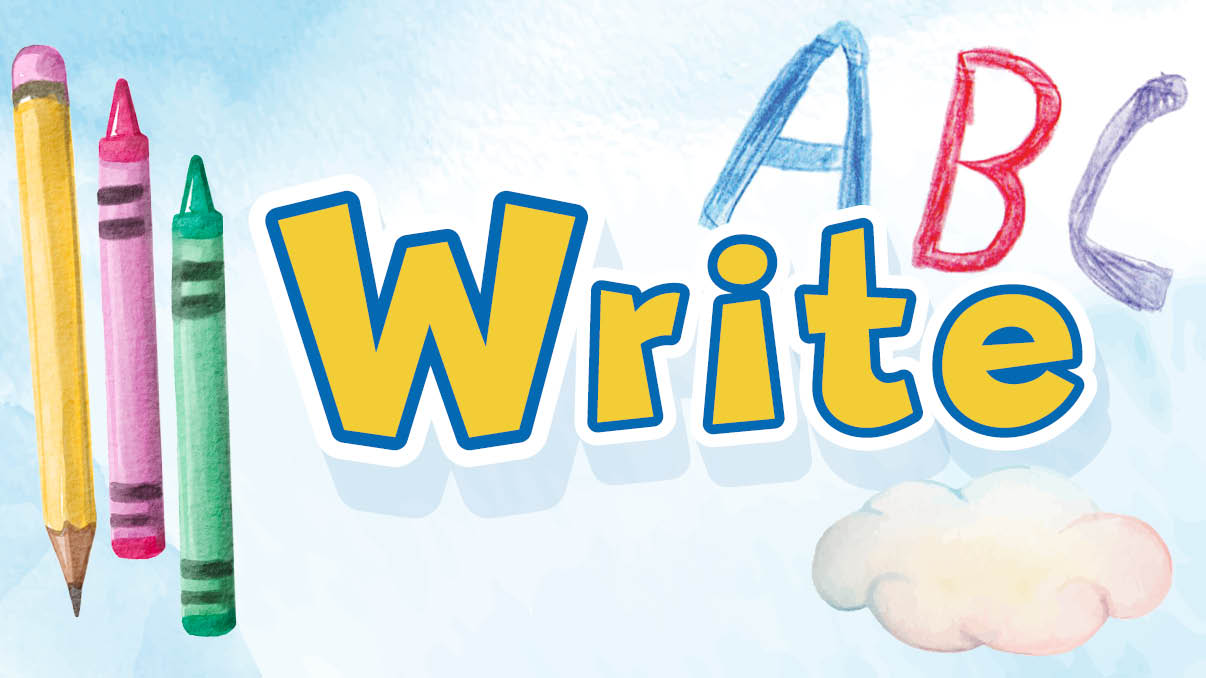Your preschool child might not be able to write recognizable letters or words yet, but it’s still important (and fun!) for them to develop their pre-writing skills.
Here are some activities you can do with your child to help prepare them to be ready to write as they get older. Don’t do these all at once. Just choose one to get started. On another day, you can try a different activity.
Give your child some crayons and paper, then ask your child to draw a picture from their own imagination. Ask them to describe to you what the picture is, while you write their answer on the page. Read the words back to them, while pointing to the writing. You are helping your child make the connection that the marks they see on the page represent words and concepts!
Ask your child to tell you a story. It can be one they are familiar with, like a fairy tale, or one they are just making up. As they narrate their story, let them see you writing out their words. Then read their story back to them while pointing to each of the written words. You are reinforcing the concept that the marks on the page represent words.
Give your child crayons and paper and ask them to “write” a story. Have them tell you the story aloud while they are scribbling on the page. Scribbling is your child’s first experience with writing. It probably won’t look like they are writing actual letters or words, but don’t correct them, just let them enjoy the process. Your child is learning the fine motor skill of holding a crayon, pen, or pencil.
Use a pencil to draw a very large letter on a piece of paper. Tell your child the name of the letter. Talk about what sound the letter makes. Now give your child a crayon and have them trace over the letter. Don’t worry that it’s not perfect. Their fine motor skills are still evolving. Your child is practicing how to control the movement of the crayon through eye-hand coordination; their skills will continue to improve with time.
You can expand the letter-writing activity by introducing both upper and lower case versions of the letter. Talk about how they look the same and how they look different. Then talk about how they both make the same sound, even though they look different. Have your child say the name of the letter as they trace over the outlines you made. Your child is learning the basics of phonics, or letter-sounds. By doing this while writing rather than just looking at a letter shape, a different part of your child’s brain is being stimulated, making new neural connections and reinforcing previously-made connections.
Children have a deep connection with their own name, so show your child the shapes and sounds of the letters in their name. Start with the uppercase letter which is the first letter in their first name. Have them trace over a letter pattern you have made. Gradually, over days or weeks, introduce the rest of the letters in their name. Start with having them write all the letters in uppercase, but later also show them how to form the lowercase letters in their name. As we get older we rarely write our names in all capital letters. Your child will take pride and pleasure in their achievement of writing their own name, and will feel a connection between the sound of their name and the shapes they made on the paper.
Make writing fun by trying out different ways to write. When you are outside, you and your child can trace letter-shapes in the dirt using a stick, or in the sand using a finger or a seashell. Inside, trace letters in a pile of salt, or shape letters out of yarn, string, or modelling clay. Again, don’t focus on whether or not the “writing” looks like actual letters or words. Just let your child explore. Have them “write” notes, cards, and letters, to friends and family members. Encourage them to “write” shopping lists and menus for meals. This is the way children begin to learn to write, and will impress on your child that writing has a purpose but can also be fun!
